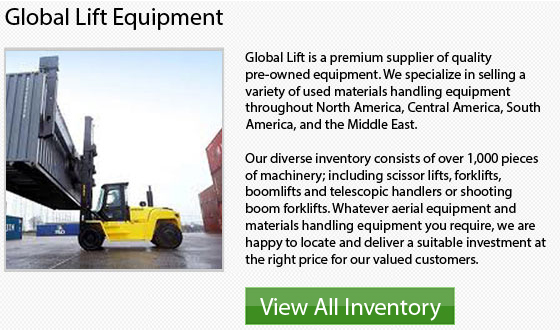
Nissan Counterbalance Forklifts Fort Worth
The counterbalanced lift truck is a lift truck that utilizes a counter balance which is connected to the rear end of the machine. This counterbalance effectively balances loads that are positioned on the blades at the front end of the machinery. This design is engineered to stabilize typical lift trucks. When it comes to electric counterbalance forklifts, the battery itself forms the counterweight.
Nearly every forklift manufacturer would have in their product range, a counterbalance forklift. These machinery would come in a huge range of fuel sources, sizes and configurations. These forklifts can be fitted. They could work in diverse applications. These lift trucks are equipped with various kinds of accessories. Common options and attachments include: fork shifts, slip sheet attachments, side shifts and hydraulic clamps just to mention a few.
The counterbalance forklift has in fact revolutionized the entire industry of material handling. These machinery are important to the shipping and receiving centers all-around the planet because they are used for stacking, loading, unloading and horizontal transport functions. The standard warehouse forklifts are typically used for lift heights under 20 feet or 6 meters. There have been some units recently developed that are capable of lifting to heights 31 feet or 9.5 meters. The smaller 1-1.8 ton or 4000 lbs. forklifts are the main workhorses within the majority of warehouses. These are the most popular models that the majority of small businesses would have. The standard warehouse counterbalance forklift is actually a wide-aisle truck which needs around 11 feet or 3 meters to turn in.
Furthermore, the counterbalanced forklift is not necessarily confined to warehouse environments. They are usually used for container carrying and heavy use together with basically every application in between. Counterbalance forklifts are the most widely used and versatile of all materials handling machinery.
Because of their durability and versatility, counterbalance lift trucks are commonplace in a huge array of working environments, including production, retail and warehousing. Several of the industrial applications include: chemical, food, timber and automotive businesses.
- Fantuzzi Container Forklift Fort Worth
Rail / Intermodal Reach Stacker Rail or Intermodal Reach Stackers manufactured by Fantuzzi would make fast work of difficult applications. The distances between the first and second rail will drastically vary depending on the task.... More - Taylor Rough Terrain Forklift Fort Worth
Rough Terrain Lift Truck Training Class VII or rough terrain forklifts are often used in logging and forestry projects and are common on construction sites. They are the popular option for outdoor settings which depend... More - JCB Zoom Boom Fort Worth
Raw Materials The cab, body, boom and frame of a telescoping boom rough terrain forklift are generally manufactured by a lift truck manufacturer. The most common material used for these subassemblies is steel, because of... More - Potain Self Erect Cranes Fort Worth
Tower cranes are being utilized often for big building construction projects. They are necessary for the heavy lifting and positioning of materials and machinery. Tower cranes provide a different design that offers a lot of... More - Yale LP Forklifts Fort Worth
You'll notice specific types and classes of forklifts available on the market. Once you have become familiar with the numerous models, it is easier to understand you lift truck application needs prior to choosing one.... More








